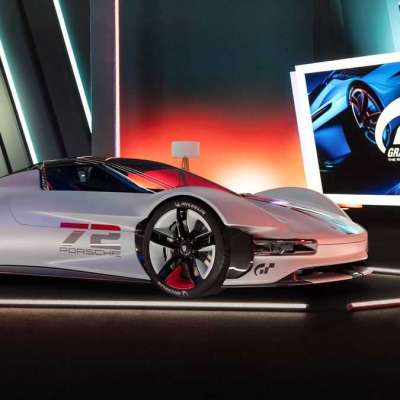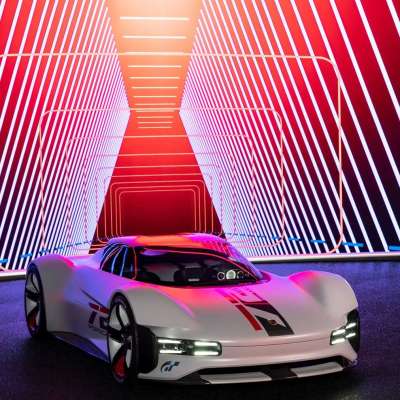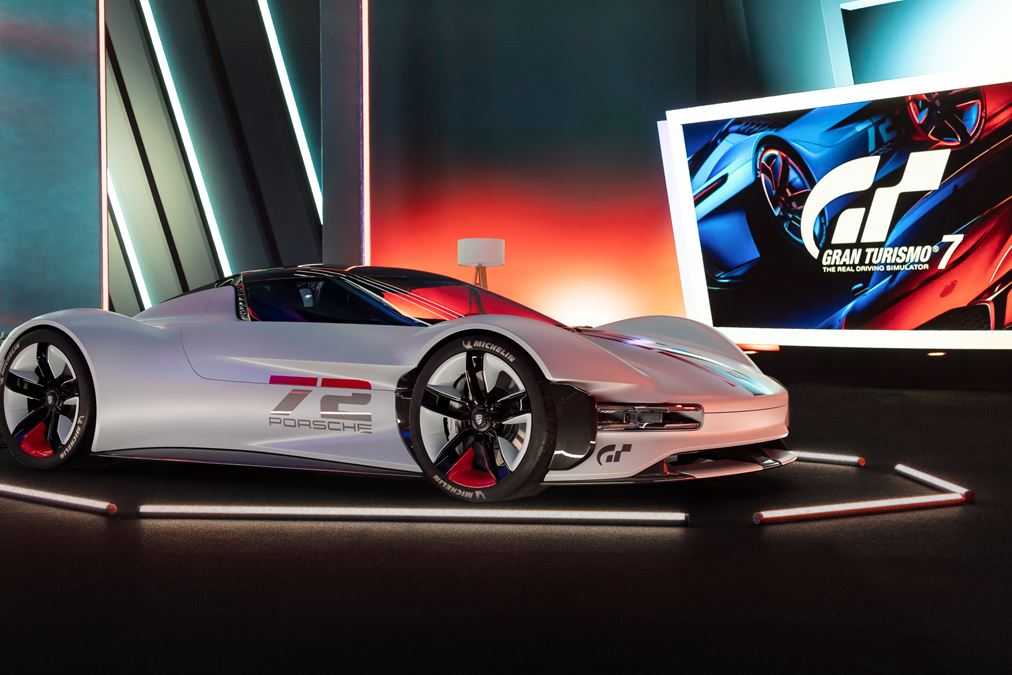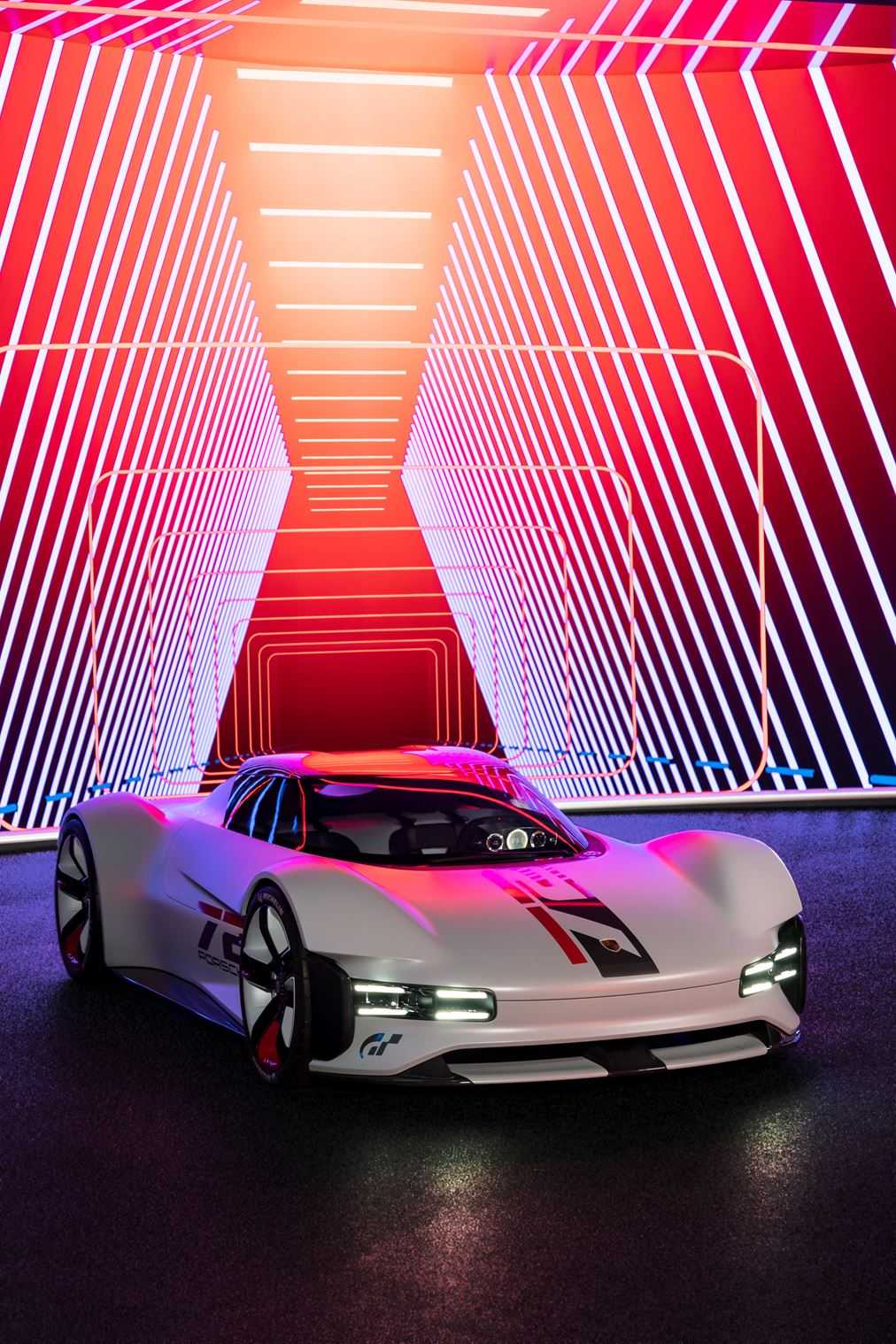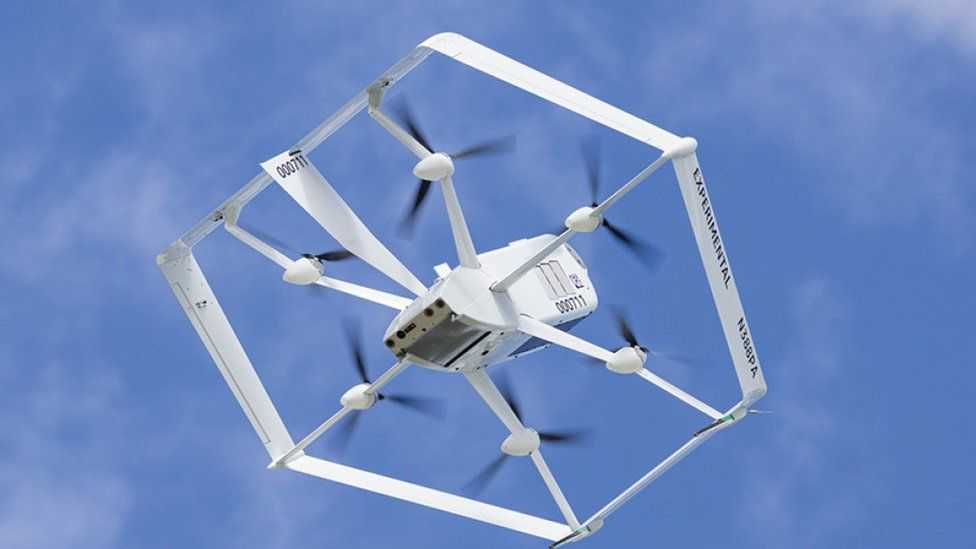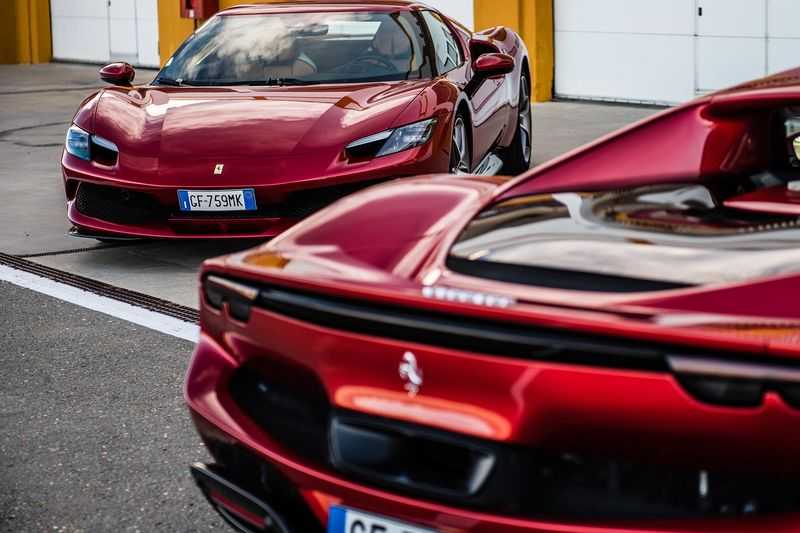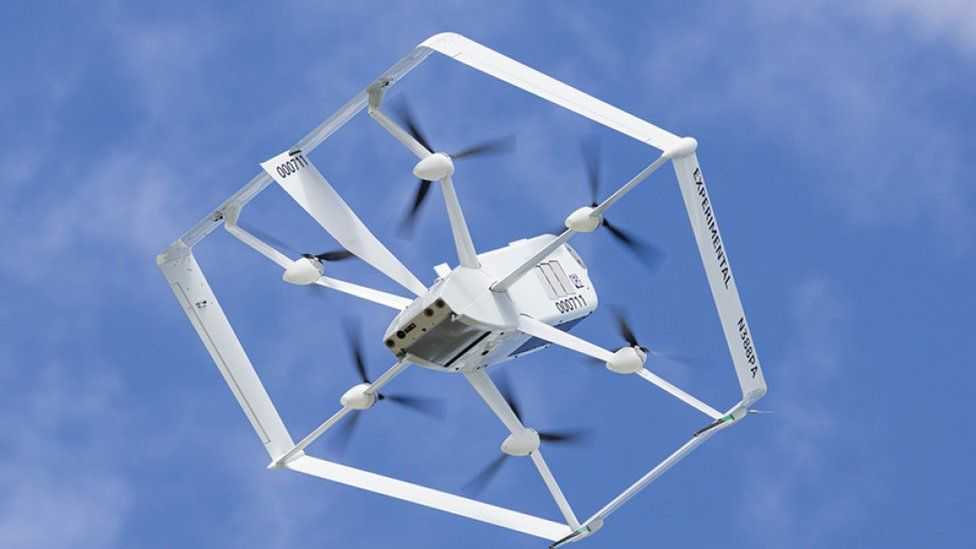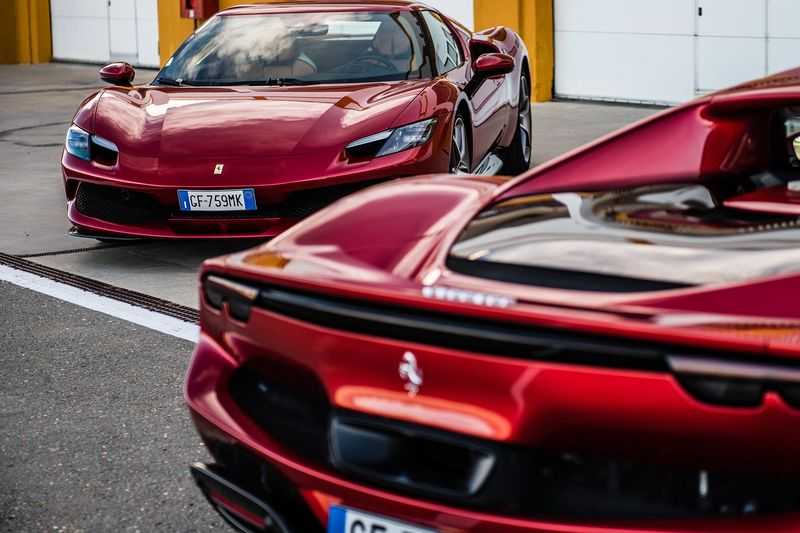How an exclusive Porsche for Gran Turismo might give a glimpse into the future
A new Porsche rolls onto the streets and is in action around the world without ever having been on an assembly belt. The Porsche Vision Gran Turismo is only available digitally as part of Gran Turismo 7. A look into the future of vehicle development.
How do you bring life to a virtual vehicle? Gran Turismo is famous for offering the most realistic digital driving experience possible. The video game series debuted in 1997 and is developed by Polyphony Digital, a division of Sony Interactive Entertainment. The studio has perfected what makes digital vehicles come alive: lifelike graphics, attention to detail, and authentic physics.
Since 2017, sports cars from Porsche have been part of the game, for example, the Taycan Turbo S, the classic Porsche 356 A 1500 GT Carrera Speedster, or the Porsche 917 Living Legend. However, the Vision Gran Turismo is the first car that cannot be driven on real roads.
How video games shape the automotive world
Just as real-world race cars influence how road vehicles evolve, so do video games affect the automotive world. This is what the president of Polyphony, Kazunori Yamauchi, says: “The kids who discovered their fascination for extraordinary cars in Gran Turismo 25 years ago are now adults. They work in the automotive industry or, as consumers, determine the success of new models. So, our game has also helped to shape the automotive world of today.”
The Porsche Vision Gran Turismo is designed with the aim to excite new generations and perhaps inspire future engineers and software developers.
Creating a realistic sports car exclusively for a videogame
Developing vehicles for video games offers many advantages. Because the laws and restrictions of reality do not apply here. Nevertheless, Porsche wanted to develop a vehicle that is as realistic as possible. The result is a compact, performance-oriented vehicle with optimum power-to-weight ratio and an agile chassis.
Since weight, performance, aerodynamics, suspension, and transmission should feel as real as possible, the virtual prototype was developed in Weissach in the same way as a real Porsche sports car. Only the behavior of the car in different weather conditions is ultimately decided by the developers at Polyphony Digital.
The design language of a near future
From all sides, the Porsche Vision Gran Turismo is a futuristic eye-catcher. From the rear, silver letters and an illuminated strip dominate the view. A large glass dome that can be folded upwards as a whole, like a jet, promises exciting design developments for the near future.
Looking at the vehicle from the front, however, the brand’s tradition is apparent. The pronounced fenders, low-set front hood and sporty height-to-width ratio make it clear: this is a classic yet alluring Porsche, with design elements that reference models like the Taycan or 911. Inside, moreover, there is no classic dashboard, but a glass panel that serves as a projection screen. Like holograms, the driving data floats in the driver’s field of vision. This creates visuals that make players curious about the real vehicles. Porsche is known for authentic and emotional experiences, while video games are able to mediate between automotive dreams and reality.
“A vehicle designed purely for the virtual world opens up exciting possibilities for us that are otherwise heavily regimented in a regular design process for a series production car,” says Michael Maurer. “Projects such as the Porsche Vision Gran Turismo are particularly valuable for us in the creative process. Further developing our clearly defined Porsche Design DNA and exchanging with designers from other industries is an important part of our work.”
Diving into the world of video games may lead Porsche to making a great leap forward. Video games make vehicles interactive and accessible, allowing them to create an approachable brand experience. And: automotive dreams are born in games. For many players, Gran Turismo is their first point of contact with Porsche and starts a lifelong fascination for sportscars. The first exclusive vehicle for a video game is therefore the next logical step for Porsche. The Porsche Vision Gran Turismo is available exclusively in Gran Turismo 7, which was released on 4 March 2022 for PlayStation 4 and PlayStation 5.
